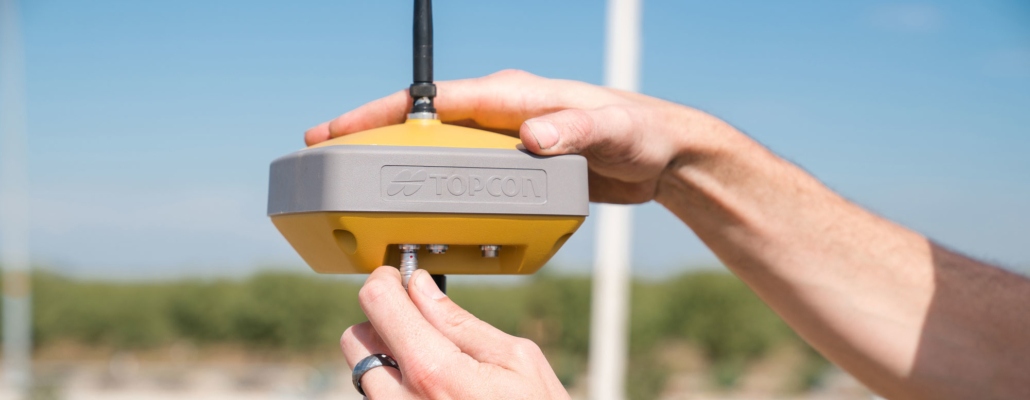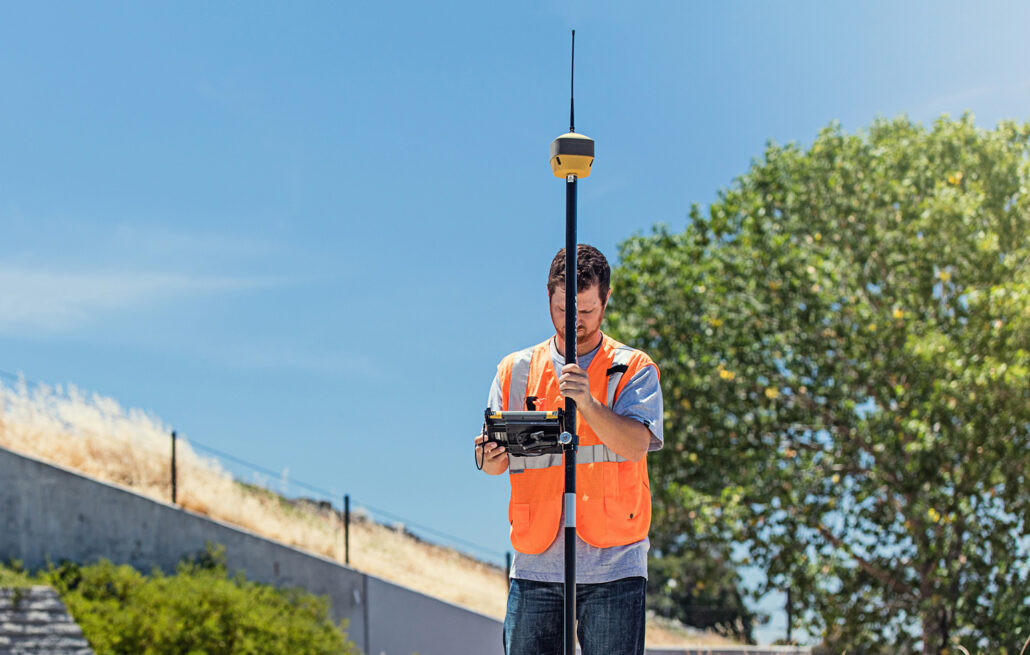By determining the coordinates of the base station and knowing the rover’s position relative to it, surveyors can determine the position of the rover and the features the rover is recording.
RTK surveying techniques improve upon traditional surveying techniques by providing accuracy on a centimetre level and immediate initialisation times.
RTK surveying has been found useful both on its own and used in conjunction with traditional surveying techniques, for a range of applications including:
But how do you conduct an RTK survey?

To complete an RTK survey, you’ll need RTK surveying equipment, including a base station and a rover.
Make sure your equipment is configured correctly, checking the satellite tracking settings, message format settings, datum settings (local, GDA94 or GDA2020), height settings (orthometric or ellipsoidal), antenna height settings (measured to antenna reference point or phase centre), RTK solution types, and Quality Control (QC) settings.
When using only two satellite constellations (GPS and GLONASS), and specially in obstructed environments like trenches or around heavy canopy, visibility to satellites will be reduced and can lead to poor performance. In previous years, this was worked around by checking your mission planning software, which determines the best time to use GNSS based on the number of satellites in range. Today, with five constellations in view (GPS, GLONASS, Galileo, BeiDou, QZSS), it is much better to use newer GNSS equipment compatible with new constellations and signals.
Then, double check that your RTK solution type is “RTK Fixed”, as that provides centimetre-level accuracy, compared to “RTK Float”, which provides metre-level accuracy.
Your RTK solution type determines how a receiver counts the number of radio wavelengths between the base station and the rover – i.e. how far away the rover is.
When the rover obtains an RTK Fix status – also called an ambiguity resolution – it basically means the rover has precisely counted the number of radio wavelengths between the satellite and the rover with the aid of the base station data.
Ensure that your antennas, range poles, and circular level vials are calibrated, as well as the main base station.
Check your antenna cable for loose connectors and kinked cables, as these can cause noisy signal reception, higher code noise, incorrect ambiguity resolution (changing the solution type from fixed ambiguity to something less accurate), and erroneous results.

RTK surveys are most accurate when the GNSS device has an unobstructed sky view, and there are plenty of GNSS satellites in range to take in data from. While the mission planning settings on your software can help to determine how to ensure the best results from the overhead satellites, all other factors are up to you.
Try to place your RTK base station in the open and in a stable environment. Buildings, trees, and bad weather will increase atmospheric errors and multipath, and the more errors the GNSS correction system needs to correct, the more will get through. An RTK base station needs at least 10-15 degrees of unobstructed sky view to work.
RTK surveying techniques can be used in conjunction with traditional surveying techniques where built-up areas are unavoidable.
The further away the rover is, the less accurate the data is. The distance between the rover and the base station is called the “baseline”, and the baseline should be a maximum of 10-20km for accurate results. For surveying projects bigger than this, you can use multiple RTK base stations.
The first step of planning your RTK survey is deciding on whether you use a network of base stations, or set up your own. Some RTK base stations are already set up and available to use with a network subscription like AllDayRTK. The Network RTK option provides coordinates from multiple bases in your local official datum, this is the most convenient option because all you need is a rover with a 4G connection.
But it’s not always that easy. Sometimes, you’ll have to set up your own base station onsite and establish a local control.
All RTK surveys are conducted with a base station and rover, but the correction communication from the base station to the rover is different. Traditional RTK surveys use UHF radio receivers to facilitate this communication, which require costly licencing fees, practically only has around a two kilometre range, and no security as to who is accessing or interfering with the data. MiRTK simplifies the process with no licence required, secures it by eliminating the risk of interference and giving you complete control over who is accessing it, and stretches the range to around 20 kilometres in practice.
Now that you know how to set up and plan your RTK survey, and when and where to conduct it, there’s only one step left before you can go ahead and perform it: getting the equipment. Aptella offers MiRTK GNSS correction systems, which simplify the process of RTK systems that otherwise use complicated UHF radio receivers. Find out more about the benefits of MiRTK here, or contact us for an obligation-free quote.

Kami membangun bisnis dengan memberikan solusi teknologi konstruksi untuk meningkatkan produktivitas pelanggan kami.
PT Aptella Solusi Teknologi
NPWP: 70.620.776.8.017.000
2024 Aptella | NPWP: 70.620.776.8.017.000 | Terms and Conditions | Privacy Policy